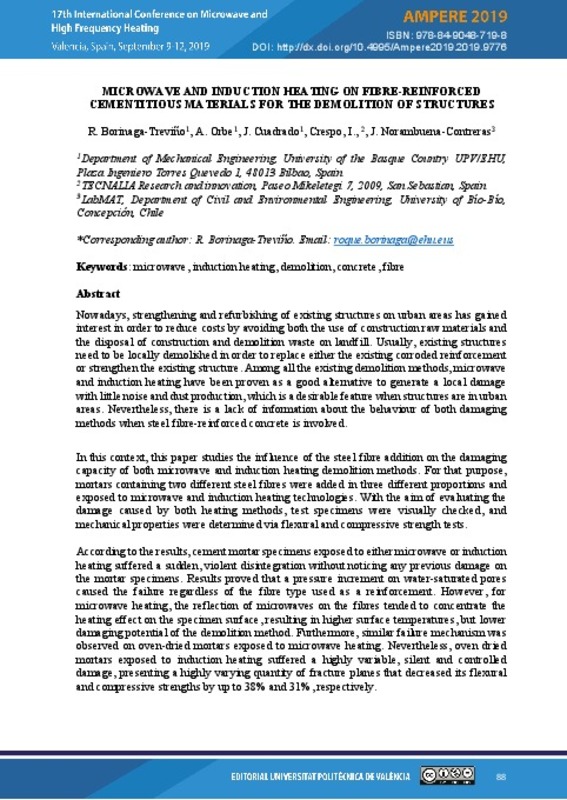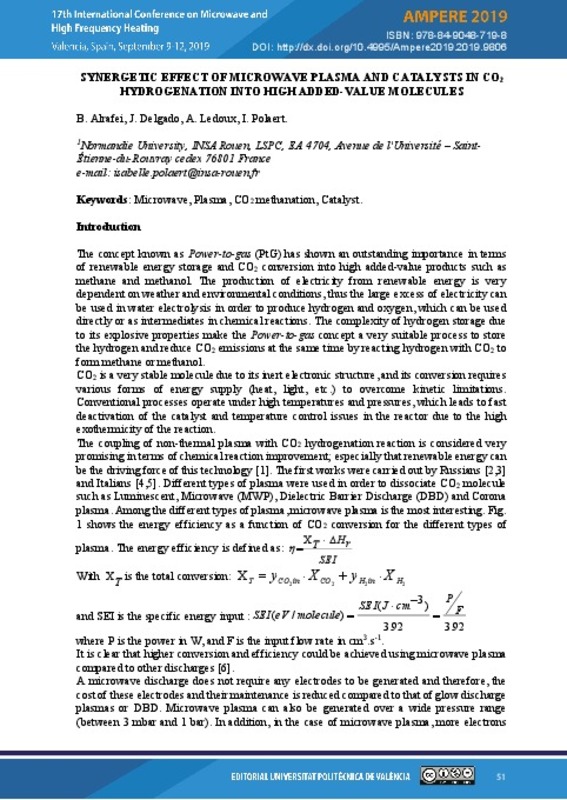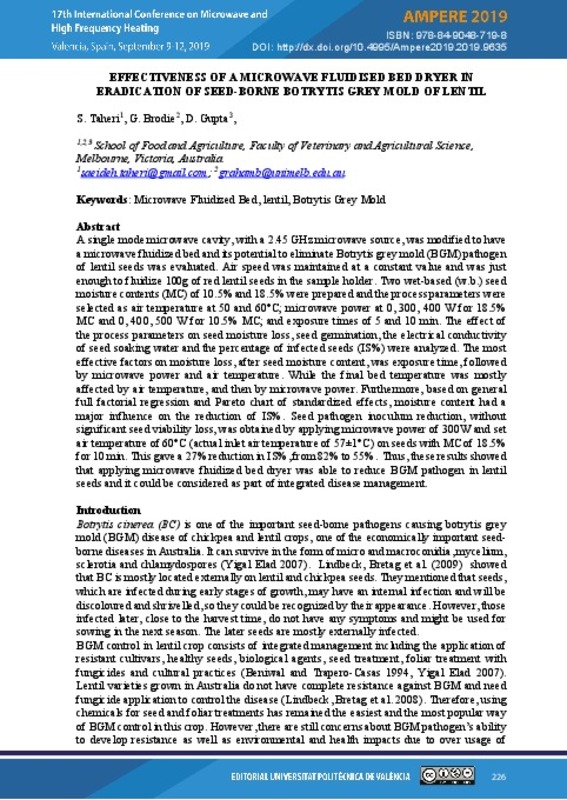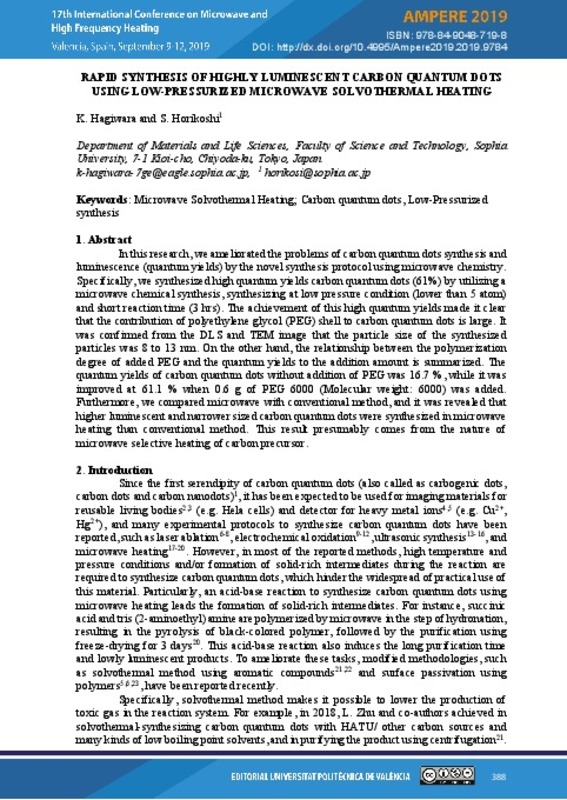JavaScript is disabled for your browser. Some features of this site may not work without it.
Buscar en RiuNet
Listar
Mi cuenta
Estadísticas
Ayuda RiuNet
Admin. UPV
Application of microwave and induction heating on fibre-reinforced cementitious materials for the demolition of structures
Mostrar el registro sencillo del ítem
Ficheros en el ítem
| dc.contributor.author | Treviño, Roque
|
es_ES |
| dc.contributor.author | Orbe, Aimar
|
es_ES |
| dc.contributor.author | Cuadrado, Jesus
|
es_ES |
| dc.contributor.author | Crespo, I.
|
es_ES |
| dc.contributor.author | Norambuena-Contreras, Jose
|
es_ES |
| dc.date.accessioned | 2019-11-11T12:39:01Z | |
| dc.date.available | 2019-11-11T12:39:01Z | |
| dc.date.issued | 2019-10-15 | |
| dc.identifier.isbn | 9788490487198 | |
| dc.identifier.uri | http://hdl.handle.net/10251/130657 | |
| dc.description.abstract | [EN] Nowadays, strengthening and refurbishing of existing structures on urban areas has gained interest in order to reduce costs by avoiding both the use of construction raw materials and the disposal of construction and demolition waste on landfill. Usually, existing structures need to be locally demolished in order to replace either the existing corroded reinforcement or strengthen the existing structure. Among all the existing demolition methods, microwave and induction heating have been proven as a good alternative to generate a local damage with little noise and dust production, which is a desirable feature when structures are in urban areas. However, there is a lack of information about the behaviour of both damaging methods when steel fibre-reinforced concretes are involved. This paper studies the influence of the steel fibre addition on the damaging capacity of both microwave and induction heating demolition methods. For that purpose, mortars containing two different steel fibres (steel fibres used for concrete reinforcement and brass covered steel needles used for mortar reinforcement) were added in three different proportions (0%, 0.5% and 1% by unit volume of mortar) and exposed to up to 10 min of either microwave heating (0.003-0.03 W/mm3, 2.45 GHz) or induction heating (0.016-0.023 W/mm3, 18 kHz). With the aim of evaluating the damage caused by the heating methods, test specimens were visually checked, and mechanical properties were determined via flexural and compressive strength tests. According to the results, mortars exposed to either microwave or induction heating suffered a sudden, violent disintegration without noticing any previous damage on the mortar specimens. Results proved that pressure increment on water-saturated pores caused the failure no matter the fibre type used as a reinforcement. However, for microwave heating, the reflection of microwaves on the fibres tended to concentrate the heating effect on the specimen surface, resulting in higher surface temperatures, but lower damaging potential of the demolition method. Furthermore, similar failure mechanism was observed on oven-dried mortars exposed to microwave heating. Nevertheless, oven dried mortars exposed to induction heating suffered a highly variable, silent and controlled damage, presenting a highly varying quantity of fracture planes that decreased its flexural and compressive strengths by up to 38% and 31%, respectively. | es_ES |
| dc.description.sponsorship | This work has been partly financed within the European Horizon 2020 Joint Technology Initiative Shift2Rail through contract no.730841 (IN2TRACK) and no. 826255 (IN2TRACK2). This work was also co-financed with the projects Elkartek 2018 ref. KK2018/00073 (GOLIAT) and Elkartek 2019 ref. KK-2019/00023 (GOLIAT2). The authors also wish to thank the Basque Government for financial assistance through IT919-16. | |
| dc.format.extent | 10 | es_ES |
| dc.language | Inglés | es_ES |
| dc.publisher | Editorial Universitat Politècnica de València | es_ES |
| dc.relation.ispartof | AMPERE 2019. 17th International Conference on Microwave and High Frequency Heating | es_ES |
| dc.rights | Reconocimiento - No comercial - Sin obra derivada (by-nc-nd) | es_ES |
| dc.subject | Energy Production by Microwaves | es_ES |
| dc.subject | Microwave CVD | es_ES |
| dc.subject | EM Modelling | es_ES |
| dc.subject | Microwave Material interaction | es_ES |
| dc.subject | Dielectric Properties | es_ES |
| dc.subject | Dielectric Properties Measurement | es_ES |
| dc.subject | Solid State Microwave | es_ES |
| dc.subject | Microwave Processing | es_ES |
| dc.subject | Microwave Chemistry | es_ES |
| dc.subject | Microwave applicators design | es_ES |
| dc.title | Application of microwave and induction heating on fibre-reinforced cementitious materials for the demolition of structures | es_ES |
| dc.type | Capítulo de libro | es_ES |
| dc.type | Comunicación en congreso | es_ES |
| dc.identifier.doi | 10.4995/AMPERE2019.2019.9776 | |
| dc.relation.projectID | info:eu-repo/grantAgreement/EC/H2020/730841/EU/Research into enhanced tracks, switches and structures/ | |
| dc.relation.projectID | info:eu-repo/grantAgreement/EC/H2020/826255/EU/Research into enhanced track and switch and crossing system 2/ | |
| dc.rights.accessRights | Abierto | es_ES |
| dc.description.bibliographicCitation | Treviño, R.; Orbe, A.; Cuadrado, J.; Crespo, I.; Norambuena-Contreras, J. (2019). Application of microwave and induction heating on fibre-reinforced cementitious materials for the demolition of structures. En AMPERE 2019. 17th International Conference on Microwave and High Frequency Heating. Editorial Universitat Politècnica de València. 88-97. https://doi.org/10.4995/AMPERE2019.2019.9776 | es_ES |
| dc.description.accrualMethod | OCS | es_ES |
| dc.relation.conferencename | Ampere 2019 | es_ES |
| dc.relation.conferencedate | Septiembre 09-12,2019 | es_ES |
| dc.relation.conferenceplace | Valencia, Spain | es_ES |
| dc.relation.publisherversion | http://ocs.editorial.upv.es/index.php/AMPERE2019/AMPERE2019/paper/view/9776 | es_ES |
| dc.description.upvformatpinicio | 88 | es_ES |
| dc.description.upvformatpfin | 97 | es_ES |
| dc.type.version | info:eu-repo/semantics/publishedVersion | es_ES |
| dc.relation.pasarela | OCS\9776 | es_ES |











